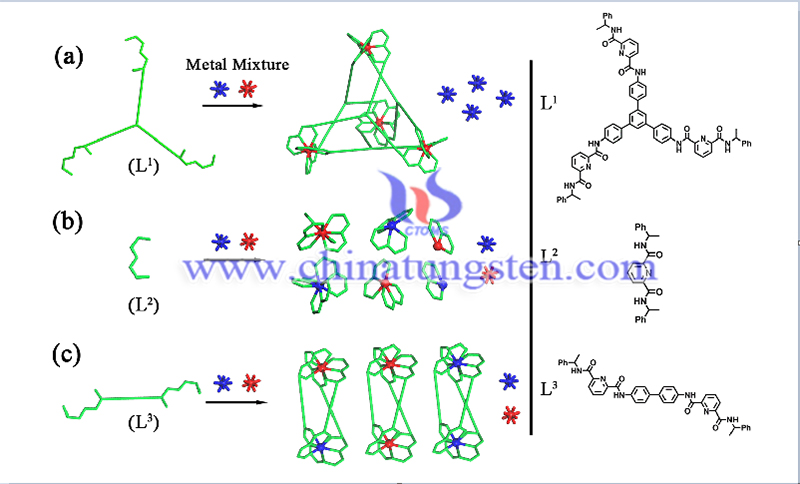Rare Earth Supramolecular Cages for Capturing Environmental Pollutants
- Details
- Category: Tungsten's News
- Published on Saturday, 13 March 2021 22:06
Researchers use rare earth supramolecular cages to capture environmental pollutants. The project named the 'Rare Earth Supramolecular Sensing Material Industry Technology’ project in Baotou will effectively promote the research and development of our country’s rare-earth functional materials application technology, and further expand the northern industry chain.
For a long time, the discharge of waste water and waste gas has been the focus of many environmental problems, among which pollutants such as small organic molecules, heavy metal ions and volatile amines have seriously threatened the environment and human health. Thus, detection and prevention of pollutants to the environment have become a top priority.
"Among the various existing methods for detecting pollutants, fluorescence-based chemical detection methods have more advantages than other detection methods, such as simple operation, low cost, and reliable test results. Fluorescence sensors are distinguished by their high sensitivity and other advantages have become one of the main research objects in the sensor field. However, finding suitable materials to construct practical fluorescent sensors still faces many challenges." Project leader and senior engineer of Baotou Research Institute of Rare Earths Jingya Li said.

According to Hongfeng Li, the unique electronic layer structure of REE ions gives rare earth-based complexes the advantages of narrow emission bands, high color purity, long fluorescence lifetime, and large Stokes shift. These advantages could overcome the interference from the background fluorescence of the detection system and improve the accuracy of detection. However, due to the consideration of the permeability of the material, the manufacturing process and performance of the device, the construction of rare-earth-based sensing materials still faces technical difficulties, so there is less development of rare-earth-based complexes as pollutant detection sensors.
To make good use of the sensing performance, the material needs to have a certain porosity. However, the large coordination number of rare earth ions tends to cause the material to form dense aggregates. In layman's terms, although the rare metal organic framework has a porous and clear channel, the solvent molecules in the channel usually hinder the entry of target molecules, and therefore restrict their interaction with the recognition site, and if the solvent molecules are removed It will cause the framework to collapse. In addition, the poor solubility also makes it more difficult to make the material into a sensor film.
In this regard, Jingya Li said: "On the one hand, the sensor film must be easy to form, and on the other hand, it is necessary to allow pollutants to enter and exit the film freely, to fully interact with the chemical substances in the film, and to use the change in fluorescence intensity to test different types of pollutants. This is a technical problem, and few researchers have made breakthroughs in this area."
The technicians combined the spatial selectivity and permeability of the supramolecular cages for capturing environmental pollutants. The team develop a new type of supramolecular materials and make them into thin films for the detection of small organic molecules, heavy metal ions and volatile amine. "The rare earth supramolecular thin film we prepared can make up for the issue of sensibility." Li Jingya said.
"This project will develop new types of supramolecular cages for capturing environmental pollutants. The film made based on this material can be used to detect various of pollutants in waste water and exhaust gas. The application and operation of this technology are simple and reliable, and it is of great significance to increase the added value of rare earth products." Jingya Li said.
- Rare Earth Manufacturer & Supplier, Chinatungsten Online: www.chinatungsten.com
- Tungsten News & Prices of China Tungsten Industry Association: www.ctia.com.cn
- Molybdenum News & Price: news.molybdenum.com.cn
- Tel.: 86 592 5129696; Fax: 86 592 5129797; Email: sales@chinatungsten.com



 sales@chinatungsten.com
sales@chinatungsten.com